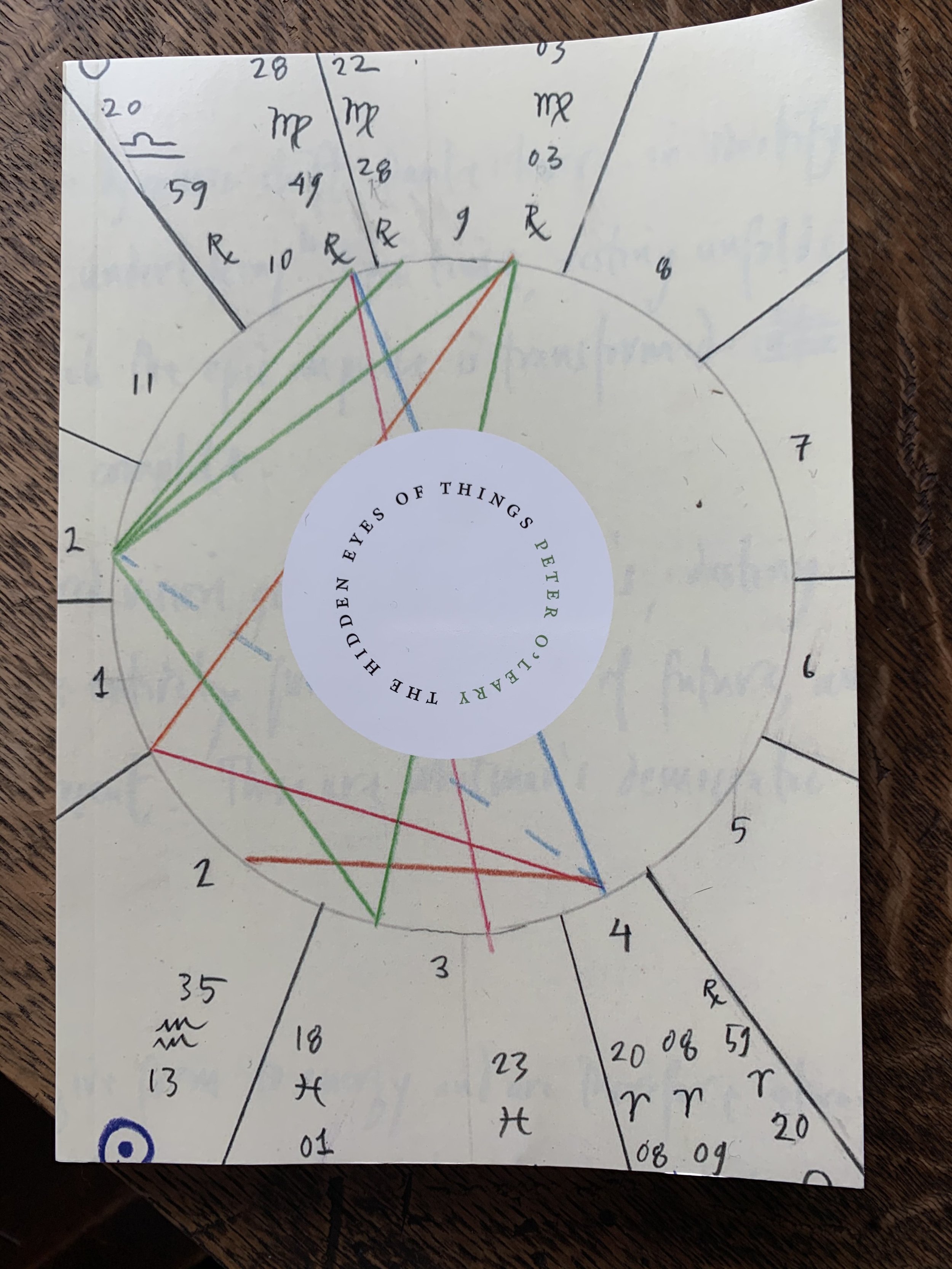The Hidden Eyes of Things.
Very pleased to announce the publication of The Hidden Eyes of Things, a new book-length poem out from the Cultural Society. You can order the book directly from the Cultural Society here; or you can order it from SPD.
The Hidden Eyes of Things completes the trilogy on poetry and consciousness begun in Phosphorescence of Thought (about the evolution of consciousness), and continued in Earth Is Best (about altered states of consciousness). The Hidden Eyes of Things explores the unconscious through the discipline of astrology.
I decided not to include in the book itself the list of all the books I consulted and used but include it here for anyone who might be interested.
THE HIDDEN EYES OF THINGS
BIBLIOGRAPHY
These are the books I consulted, borrowed and quoted from, and ruminated on over the long course of the composition of this poem.
Abu’l-Rayhan Muhammad Ibn Ahmad al-Biruni, The Book of Instruction in the Elements of the Art of Astrology, Astrology Classics 2006.
Robert Hinckley Allen, Star Names: Their Lore and Meaning. Dover 1963.
Tamsyn Barton, Ancient Astrology, Routledge 1994.
Austin Coppack and Daniel A. Schulke, The Celestial Art: Essays on Astrological Magic, Three Hands Press 2018.
Brian Cox, Wonders of the Solar System, Collins 2011.
Franz Cumont, Astrology and Religion among the Greeks and Romans, Dover 1960.
Dionysius (Pseudo-Dionysius), The Complete Works, trans. Colm Luibheid, Classics of Western Spirituality 1987.
Marsilio Ficino, The Book of Life, trans. Charles Boer, Spring Publications 1980.
The Letters of Marsilio Ficino, volumes I-III, trans. members of the Language Department of the School of Economic Science, London, Gingko Press 1985.
Fred Gettings, The Arkana Dictionary of Astrology, Arkana 1985.
Fred Gettings, The Book of the Zodiac, Triune 1972.
Robert Graves, The Greek Myths, Penguin Classics 1960.
Robert Hand, Horoscope Symbols, Whitford Press, 1981.
James Hillman, A Terrible Love of War, Penguin 2004.
Homeric Hymns Homeric Apocrypha Lives of Homer, ed. and trans. Martin L. West, Loeb 2003.
Brian Innes, Horoscopes: How to Draw and Interpret Them, Arco 1978.
Carl Kerényi, Prometheus: Archetypal Image of Human Existence, trans. Ralph Manheim, Bollingen Series LXV.I 1963.
Lucretius, De Rerum Natura, trans. W.H.D.Rouse, Loeb 1992.
Manilius, Astronomica, trans. G.P. Goold, Loeb 1997.
Plotinus, The Enneads, trans. Stephan MacKenna, Pantheon 1969.
David A. Rothery, The Planets: A Very Short Introduction, Oxford 2010.
Richard Tarnas, Cosmos and Psyche: Intimations of a New World View, Viking 2006.
Edgar Wind, Pagan Mysteries in the Renaissance, Faber and Faber 1958.




